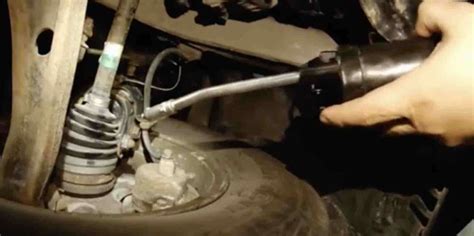Protect Your CV Joints: Grease Them the Smart Way
Constant Velocity (CV) joints are critical components in your vehicle's drivetrain, allowing power to smoothly transfer from the transmission to the wheels, even during sharp turns. Neglecting their maintenance, especially proper lubrication, can lead to premature wear, costly repairs, and even dangerous breakdowns. This comprehensive guide will walk you through the smart way to grease your CV joints, ensuring your vehicle's longevity and your safety on the road.
What are CV Joints and Why Grease Them?
CV joints, also known as homokinetic joints, are complex pieces of engineering. They consist of inner and outer joints, connected by a driveshaft. These joints allow the driveshaft to rotate at a constant velocity, regardless of the angle of the wheels. This is crucial for maintaining smooth power delivery during turns.
Over time, the constant motion and stress placed on CV joints cause the internal components to wear down. Proper lubrication with grease is essential to mitigate this wear. Grease acts as a lubricant, reducing friction between moving parts, preventing corrosion, and protecting against contaminants like dirt and water. Ignoring this crucial step accelerates wear and tear, leading to potential joint failure.
How Often Should You Grease Your CV Joints?
The frequency of greasing your CV joints depends on several factors, including:
- Vehicle make and model: Consult your owner's manual for manufacturer-recommended maintenance schedules.
- Driving conditions: Off-road driving or frequent harsh conditions (e.g., heavy snow, mud) will necessitate more frequent greasing.
- Type of grease: Some greases offer extended life compared to others.
Generally, it's a good practice to inspect your CV joints every 6 months to a year and grease them as needed. Look for signs of leaking grease, worn boots, or unusual noises emanating from the joints.
What Type of Grease Should You Use?
Using the correct type of grease is paramount. Using an inappropriate grease can lead to improper lubrication and accelerated wear. Your owner's manual should specify the recommended grease type. If not, consult a trusted mechanic or parts supplier. Many modern vehicles utilize a molybdenum disulfide-based grease, which offers excellent protection and longevity.
Never use standard automotive grease. CV joints require a specific type of grease formulated to withstand high pressure and extreme conditions. Using the wrong grease can actually damage the joint.
How to Grease Your CV Joints: A Step-by-Step Guide
This section provides a general guide. Always consult your owner's manual for specific instructions for your vehicle. Incorrect procedures can damage your vehicle.
-
Safety First: Secure your vehicle on a level surface and engage the parking brake. Wear appropriate safety gear, including gloves.
-
Locate the Grease Fittings: These are usually small nipples located on the outer CV joint boots.
-
Clean the Area: Use a clean rag or brush to remove any dirt or debris around the grease fittings.
-
Attach the Grease Gun: Connect the grease gun to the fitting.
-
Apply Grease: Slowly pump the grease gun until fresh grease is visible extruding from the boot. Don't overfill the boot.
-
Repeat for all Joints: Repeat this process for all CV joints.
-
Inspect Boots: Inspect the boots for any signs of damage. Cracked or torn boots allow contaminants to enter the joint, leading to premature failure.
What Happens If You Don't Grease Your CV Joints?
Neglecting to grease your CV joints can have serious consequences, including:
- Premature wear and tear: This leads to costly repairs or replacements.
- Joint failure: This can cause loss of control, especially during turns, resulting in accidents.
- Noise and vibration: You'll likely notice unusual noises and vibrations, indicating a problem.
- Reduced fuel efficiency: Friction from worn joints can negatively impact fuel economy.
Frequently Asked Questions
How much grease should I use?
Use just enough grease to push out old grease and ensure the joint is fully lubricated. Overfilling can cause the boot to rupture. Observe the grease extruding from the boot; once it appears clean, stop pumping.
Can I grease my CV joints myself?
Yes, but only if you're comfortable working on your car and have the necessary tools. If you are unsure, it's always best to consult a qualified mechanic.
What are the signs of a bad CV joint?
Signs of a bad CV joint include clicking or popping noises, especially during turns, vibrations, and grease leaks from the boot.
How much does it cost to replace a CV joint?
The cost of replacing a CV joint varies widely depending on the vehicle, labor costs, and parts. It's often significantly more expensive than regular greasing.
By following these guidelines, you can effectively and safely maintain your CV joints, ensuring a smooth and reliable driving experience. Regular inspection and timely lubrication will significantly extend the life of these crucial components and prevent costly repairs down the road. Remember, proactive maintenance is key to preventing costly breakdowns and ensuring your safety on the road.

